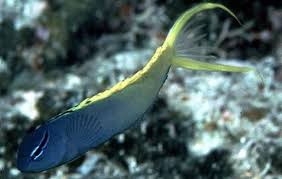The Dragon in Legends of Creation and Mysticism in Chinese Mythology

Dragons, revered as divine and mystical creatures in Chinese mythology, have long been symbols of power, strength, and wisdom. The dragon is an iconic figure, whose roles in creation myths and mystical legends are deeply intertwined with the very foundations of Chinese culture. Throughout centuries, the dragon has been both a creator and a symbol of the cosmic mysteries that govern the universe. In this article, we explore the fascinating place of the dragon in Chinese creation myths and its role in the mystical traditions that have shaped Chinese thought and spirituality.
The Symbolism of the Dragon in Chinese Mythology
Before diving into the specifics of the dragon’s role in creation and mysticism, it’s essential to understand the symbolism of the dragon itself in Chinese culture. In contrast to the malevolent fire-breathing dragons often seen in Western traditions, the Chinese dragon, known as “Lóng” (龙/龍), is predominantly a benevolent and auspicious symbol. It is often portrayed as a creature with the body of a snake, the antlers of a deer, the claws of an eagle, the scales of a fish, and the face of a camel. This unusual combination of animal traits gives the dragon a mystical and powerful aura, enabling it to transcend the limitations of any one being.
The dragon in Chinese mythology is connected with a multitude of positive forces, such as good fortune, imperial power, fertility, and prosperity. Its mystical power is closely linked with water, clouds, rain, and other natural phenomena. It is also associated with the emperor, who was often referred to as the “Son of the Dragon,” symbolizing the divine mandate given to him to rule the land. This deep connection between the dragon and the forces of nature sets the stage for the role the dragon plays in the creation of the world and the mysteries of the cosmos.
The Dragon in the Creation Myth: The Cosmic Birth
The dragon is often central to creation myths in Chinese folklore. One of the most famous stories that links dragons to the origins of the universe is the myth of Pangu, the first living being and creator of the world. In the beginning, there was only chaos—an amorphous and formless mass that existed in the dark void. According to the myth, Pangu was born from this chaos, emerging as a giant who separated the heavens and the earth with his mighty axe.
While Pangu is generally credited with the physical creation of the world, the role of the dragon in the creation myth is also significant. In many versions of the Pangu legend, the dragon is considered a helper or companion to Pangu during the creation process. The dragon is thought to have helped Pangu by controlling the waters that surrounded the chaos and assisting in the shaping of the world’s features.
The connection between the dragon and water is central to its role in creation myths. In Chinese cosmology, water is one of the fundamental elements, and the dragon, as a water deity, is intimately tied to this element. As the world took shape, the dragon was responsible for controlling and regulating the flow of rivers, seas, and rains, ensuring that the world would be fertile and capable of sustaining life.
Additionally, in some versions of the myth, the dragon was said to have assisted Pangu by breathing life into the newly formed world, imbuing the earth with vitality. The dragon’s breath was believed to give birth to the first winds, clouds, and rain that nourished the land, thus continuing the process of creation. This mystical connection between the dragon and the creation of the world established the dragon as an important figure in the cosmological order.
The Dragon and the Jade Emperor: Mysticism and Divine Order
In Chinese mythology, the Jade Emperor, known as “Yù Huáng Dà Dì” (玉皇大帝), is one of the highest deities, reigning over heaven and all celestial beings. His dominion represents the divine order and harmony of the universe. The Jade Emperor is often depicted with the dragon, which is one of the most important creatures in his celestial court. The relationship between the dragon and the Jade Emperor is one that reflects the interplay of mysticism, creation, and divine authority.
The dragon’s role in the Jade Emperor’s court is one of both spiritual significance and mystical symbolism. As the ruler of heaven and the embodiment of cosmic harmony, the Jade Emperor relies on the dragon to maintain order in the heavens. In many legends, the dragon is seen as a messenger or servant of the Jade Emperor, sent to perform tasks that uphold the divine will. The dragon’s mystical powers are used to ensure that natural forces—such as rain, storms, and seasonal changes—are in alignment with the needs of the celestial court and the human world.
The dragon also serves as a protector of sacred places in the celestial realm, guarding the heavens and acting as an intermediary between gods and humans. The mystical aura surrounding the dragon in these stories emphasizes its connection to the divine, as it is seen as a creature capable of traversing both the mortal and spiritual worlds.
This relationship between the dragon and the Jade Emperor exemplifies the importance of the dragon in Chinese mysticism. It is not just a creature of physical power but also a spiritual being with a deep connection to the cosmic forces that govern existence.
The Dragon in Taoism: Mystical Transformation and the Flow of Qi
Taoism, one of the major religious and philosophical traditions in China, has a unique and profound connection with the dragon. In Taoist cosmology, the dragon is seen as a powerful symbol of transformation and the flow of life energy, known as “Qi” (气). Taoism emphasizes living in harmony with the Tao, or “the Way,” which is the natural flow of the universe. The dragon embodies the Taoist belief in the cyclical and transformative nature of existence.
In Taoist philosophy, dragons are often seen as guardians of the “Qi” that flows through the universe. They are believed to possess the ability to control the forces of nature, including wind, water, and fire, by channeling the energy of “Qi” and maintaining the balance of the world. Dragons are also believed to help individuals align their own “Qi” with the flow of the universe, guiding them toward spiritual enlightenment.
Taoist alchemy further highlights the mystical role of the dragon. In Taoist alchemical practices, the dragon is often used as a symbol of spiritual transformation, representing the process of refining one’s inner energies to achieve immortality. The dragon’s ability to transform and transcend its physical form parallels the Taoist quest for spiritual transformation and self-cultivation.
Moreover, the Taoist dragon is often depicted as residing in sacred places such as mountains, rivers, and caves, which are seen as sources of mystical power. These locations are considered sacred because they are believed to be in harmony with the natural flow of “Qi,” and the dragon’s presence in these areas represents the deep connection between nature, spirituality, and the Tao.
The Mystical Dragon in Chinese Folklore
Beyond its association with the divine and the spiritual, the dragon also plays a significant role in Chinese folklore as a creature of mystery and transformation. Legends about dragons often involve encounters with gods, immortals, and mortals, with the dragon serving as a guide to those who seek wisdom, power, or enlightenment.
One well-known story is that of the Dragon Gate (龙门), where a carp transformed into a dragon after swimming through a waterfall. This tale is symbolic of the mystical powers of transformation that are inherent in the dragon mythos. The dragon in this story represents the potential for growth, change, and transcendence, as it symbolizes the journey of the soul from an ordinary state to one of higher spiritual achievement.
In many Chinese legends, dragons are also associated with the concept of immortality. These creatures are often depicted as possessing the ability to transcend death, and their connection to the supernatural allows them to live forever. This connection to immortality ties into the broader themes of Taoist mysticism, where the dragon represents the ultimate goal of spiritual transformation—eternal life and unity with the Tao.
Dragons and the Mystical Forces of Nature
One of the most compelling aspects of dragons in Chinese mythology is their deep connection with the mystical forces of nature. Dragons are often portrayed as controlling or being closely linked to the elements—water, wind, earth, and fire. These elements represent the basic building blocks of the universe and the forces that sustain life. The dragon is seen as the ultimate embodiment of these forces, able to wield them to bring about change and harmony.
In many stories, dragons are able to control the flow of rivers and seas, summon rain for crops, or manipulate the winds to create storms or calm the skies. These abilities make the dragon a figure of both creation and destruction, with its mystical powers capable of shaping the world in both beneficial and destructive ways.
Conclusion
The dragon is a symbol of immense power and mysticism in Chinese mythology, deeply embedded in the stories of creation and the mystical traditions that have shaped Chinese culture for millennia. As a force of nature, a divine messenger, and a guide to spiritual transformation, the dragon has transcended its mythical origins to become a powerful symbol of creation, mysticism, and transformation. Whether in the creation myths of Pangu or the Taoist philosophy of spiritual cultivation, the dragon represents the cosmic forces that shape the universe, reminding us of the interconnectedness of all things and the endless mysteries of existence. Through the dragon, Chinese mythology invites us to explore the depths of the unknown and the boundless potential for transformation within ourselves and the world around us.

